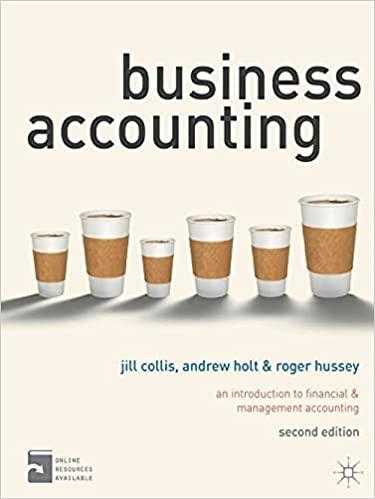Answered step by step
Verified Expert Solution
Question
1 Approved Answer
! ! ! Please complete the entire question!!! Incomplete answers will be downvoted, show work for all steps and answer all parts of the question
Please complete the entire question!!!
Incomplete answers will be downvoted, show work for all steps and answer all parts of the question or it will be downvoted
Required:
For parts A to I, assume that Sweeten Company uses departmental predetermined overhead rates with machine
hours as the allocation base in both departments and Job P included units and Job Q included units. For parts
J to O assume that the company uses a plantwide predetermined overhead rate with machinehours as the allocation
Required information
A What were the companys predetermined overhead rates in the Molding Department and the Fabrication Department? Round your answers to decimal places.
B How much manufacturing overhead was applied from the Molding Department to Job P and how much was applied to Job QDo not round intermediate calculations.
C How much manufacturing overhead was applied from the Fabrication Department to Job P and how much was applied to Job QDo not round intermediate calculations.
D What was the total manufacturing cost assigned to Job PDo not round intermediate calculations.
E If Job P included units, what was its unit product cost? Do not round intermediate calculations. Round your final answer to nearest whole
F What was the total manufacturing c
G If Job Q included units, what was its unit product cost? Do not round intermediate calculations. Round your final answer to neares
H Assume that Sweeten Company used costplus pricing and a markup percentage of of total manufacturing cost to establish selling prices for all of its jobs. What selling price would the company have established for Jobs P and Q What are the selling prices for both jobs when stated on a per unit basis? Do not round intermediate calculations. Round your final answers to nearest whole dollar.
I. What was Sweeten Companys cost of goods sold for March? Do not round intermediate calculations.
J What was the companys plantwide predetermined overhead rate? Round your answer to decimal places.
K How much manufacturing overhead was applied to Job P and how much was applied to Job QDo not round intermediate calculations.
L If Job P included units, what was its unit product cost? Do not round intermediate calculations. Round your final answer to nearest whole dollar.
M If Job Q included units, what was its unit product cost? Do not round intermediate calculations. Round your final answer to nearest whole dollar.
N Assume that Sweeten Company used costplus pricing and a markup percentage of of total manufacturing cost to establish selling prices for all of its jobs. What selling price would the company have established for Jobs P and Q What are the selling prices for both jobs when stated on a per unit basis? Do not round intermediate calculations
OWhat was Sweeten Companys cost of goods sold for March? Do not round intermediate calculations.
Please Complete the entire question!!!

Step by Step Solution
There are 3 Steps involved in it
Step: 1

Get Instant Access to Expert-Tailored Solutions
See step-by-step solutions with expert insights and AI powered tools for academic success
Step: 2

Step: 3

Ace Your Homework with AI
Get the answers you need in no time with our AI-driven, step-by-step assistance
Get Started


